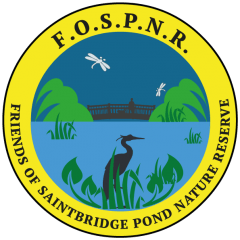It has been a busy time at the pond and in our allotments. The FOSP AGM provided us with an opportunity to look at what we have done and future plans for FOSP at the site. We are just custodians and will continue to improve and re-wild the site for all visitors to the pond.

The vandalism which happened during mid-December is behind us and we are moving forward. We also had some incidents around the feeding area but have repaired them.




The Primroses, Wild Garlic and Celandine have produced a wonderful display on the new bank by the dam.


You may have seen us over the past couple of Sundays, clearing the wood and opening up the woodland.
Removing ‘whips from the margins of the mudflats.
BE very quiet and you might here this fellow below……. The Water Rail

- Scientific name: Rallus aquaticus
- Bird family: Rails, crakes and coots
- UK conservation status: Green
- Protected by The Wildlife and Countryside Act 1981
Smaller and distinctly slimmer than the moorhen, the water rail is a fairly common but highly secretive inhabitant of freshwater wetlands. It has chestnut-brown and black upper parts, grey face and underparts and black-and-white barred flanks, and a long red bill. Difficult to see in the breeding season, it is relatively easier to find in winter, when it is also more numerous and widespread. Although usually secretive they can become confiding but are still far more often heard than seen, so listen very carefully near the big island.
WILLOW CLEARANCE



With early summer greens now making them known, the group have been clearing the Willows whips which have established themselves on the wetland margins. This keeps the vista free from obstruction and lessening the build-up of sediment and allowing flow through from up stream. We are working closely with local voluntary and national bodies to ensure that the sediment moving down will eventually be captured and held on site. We hope to reclaim the river banks for local wildlife, enabling more access & diversity for all species on the Twyver and Sudbrook.



